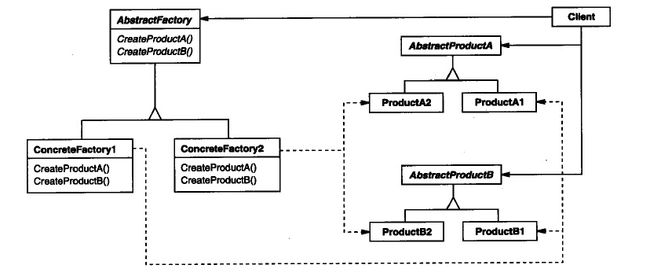- OpenSSH详解:构建安全远程管理的核心技术
ScilogyHunter
常见软件库安全OpenSSH
OpenSSH详解:构建安全远程管理的核心技术引言在数字化时代,远程管理服务器和数据传输的安全性至关重要。OpenSSH(OpenSecureShell)作为SSH协议的开源实现,通过加密通信、身份验证和数据完整性保护,彻底解决了传统工具(如Telnet、FTP)的明文传输风险。本文将从核心原理、配置实践到高级功能,全面解析OpenSSH的技术细节与应用场景。一、OpenSSH的核心架构与工作原理
- 交换机救命命令手册:华为 & 思科平台最全运维指令速查表
IT程序媛-桃子
数通华为认证服务器运维
引言:这是一份救命的交换机运维秘籍在交换机配置与故障排查过程中,不论你是初入网络世界的小白,还是年资数年的资深工程师,总会遇到那些“关键时刻靠得住的命令”。这篇文章,我将整理一份覆盖华为+思科双平台的实战命令手册,从最基础的设备状态查看,到VLAN、STP、防环、LACP、QOS、抓包、限速、安全加固等操作,通通囊括。关键时刻,拿来即用,就是这篇的全部意义。01️⃣基础生存命令:先活下来再说场景华
- 利用AI与MySQL提升工业物联网健康监测的智慧水平——构建预测性维护的新纪元
墨夶
数据库学习资料1人工智能mysql物联网
在工业4.0和智能制造的大背景下,如何确保生产设备的高效稳定运行成为企业竞争力的核心要素之一。传统的事后维修方式已经难以满足现代制造业的需求,而基于人工智能(AI)的预测性维护系统则为这一挑战提供了全新的解决方案。今天,我们将深入探讨如何结合AI技术和MySQL数据库,打造一个智能、高效的工业物联网(IIoT)健康监测平台,助力企业在激烈的市场竞争中脱颖而出。一、为什么选择AI+MySQL?1.A
- 数据安全新纪元——多方安全计算与MySQL结合的隐私预算管理深度解析
墨夶
数据库学习资料1安全mysqlandroid
在当今数字化时代,数据已成为企业最宝贵的资产之一。然而,随着数据泄露事件频发,如何确保数据的安全性和隐私性成为了亟待解决的问题。传统的加密技术虽然能在一定程度上保护静态数据,但在动态数据分析过程中却显得力不从心。为了解决这一难题,隐私计算作为一种新兴的技术应运而生,它允许在不解密原始数据的前提下进行有效的计算和分析。本文将深入探讨如何利用多方安全计算(MPC)与关系型数据库MySQL相结合的方式实
- Linux:编辑器Vim和Makefile
嶔某
Linuxlinux编辑器vim
✨✨所属专栏:Linux✨✨✨✨作者主页:嶔某✨✨vim的三种常用模式分别是命令模式(commandmode)、插入模式(Insertmode)和底行模式(lastlinemode)各模式的功能区分如下:正常/普通/命令模式(Normalmode)控制屏幕光标的移动,字符、字或行的删除,移动复制某区段及进入Insertmode下,或者到lastlinemode。插入模式(Insertmode)只有
- OpenCV图像拼接(4)图像拼接模块的一个匹配器类cv::detail::BestOf2NearestRangeMatcher
村北头的码农
OpenCVopencv人工智能计算机视觉
操作系统:ubuntu22.04OpenCV版本:OpenCV4.9IDE:VisualStudioCode编程语言:C++11算法描述cv::detail::BestOf2NearestRangeMatcher是OpenCV库中用于图像拼接模块的一个匹配器类,专门用于寻找两幅图像之间的最佳特征点匹配。它是基于“最近邻与次近邻距离比”原则来过滤匹配点对的,以提高匹配结果的准确性。这个类特别适用于需
- Java 24 正式发布:AI 开发与后量子安全引领企业级编程革命
程序猿小白菜
后端java生态圈java人工智能安全
摘要2025年3月18日,Oracle正式发布Java24(OracleJDK24),这是Java诞生30周年之际的重要版本更新。新版本聚焦AI开发支持、后量子安全加密、性能优化和开发效率提升,提供20余项新特性及数千项改进,为企业级应用开发注入全新动力。一、语言特性:代码简洁性与模式匹配增强Java24在语法层面进一步简化代码逻辑,提升开发效率:JEP488:原始类型模式匹配(第二次预览)支持在
- process.cwd()与__dirname的区别
库库的写代码
javascript开发语言ecmascript
process.cwd()是当前执行node命令时候的文件夹地址——工作目录,保证了文件在不同的目录下执行时,路径始终不变__dirname是被执行的js文件的地址——文件所在目录在electron进程中使用如果使用__dirname则会读取到当前运行目录(dist_electron)下面的文件,想要读取public中的文件需要使用process.cwd()来获取使用__dirname的报错:
- opencv python rgb转yuv_OpenCV之色彩空间与色彩空间转换
xiao fei
opencvpythonrgb转yuv
python代码:importcv2ascvsrc=cv.imread("test.jpg")cv.namedWindow("rgb",cv.WINDOW_AUTOSIZE)cv.imshow("rgb",src)#RGBtoHSVhsv=cv.cvtColor(src,cv.COLOR_BGR2HSV)cv.imshow("hsv",hsv)#RGBtoYUVyuv=cv.cvtColor(sr
- Open3D 点云DBSCAN聚类算法
MelaCandy
算法聚类numpy计算机视觉图像处理3d
目录一、DBSCAN基本原理二、代码实现2.1关键函数2.2完整代码三、实现效果3.1原始点云3.2聚类后点云Open3D点云算法汇总及实战案例汇总的目录地址:Open3D点云算法与点云深度学习案例汇总(长期更新)-CSDN博客一、DBSCAN基本原理DBSCAN(Density-BasedSpatialClusteringofApplicationswithNoise)是一种基于密度的聚类算法,
- 基于WebAssembly的浏览器密码套件
闲人编程
wasm服务器易于集成跨平台性密码套件浏览器WebAssembly
目录一、前言二、WebAssembly与浏览器密码套件2.1WebAssembly技术概述2.2浏览器密码套件的需求三、系统设计思路与架构3.1核心模块3.2系统整体架构图四、核心数学公式与算法证明4.1AES-GCM加解密公式4.2SHA-256哈希函数五、异步任务调度与GPU加速设计5.1异步任务调度5.2GPU加速六、GUI设计与功能模块七、完整代码实现九、代码自查与总结十、总结与展望一、前
- Deepseek 个性化决策输出
meisongqing
DeepSeek个性化
Deepseek个性化决策输出:基于用户画像的定制化内容生成在教育场景中,通过构建动态用户画像与智能决策模型,教育数字人可基于学生水平实时调整讲解深度,实现精准化、个性化的学习支持。以下是核心实现框架与关键步骤:1.用户画像构建:多维度数据融合数据采集:显性数据:年龄、学科成绩、测试结果、学习时长、知识点掌握进度。隐性数据:交互行为(如答题犹豫时间、回放次数)、情绪识别(语音/表情分析)、认知负荷
- 什么是Spring Boot?它在Java后端开发中的作用是什么?
破碎的天堂鸟
学习教程javaspringboot数据库
什么是SpringBoot?SpringBoot是由Pivotal团队开发的一个基于Spring框架的快速开发框架,旨在简化Spring应用的初始搭建和开发流程。其核心理念是“约定优于配置”(ConventionoverConfiguration),通过默认配置和自动化机制,使开发者能够快速构建独立的、生产级别的应用程序。以下是其核心定义与特点:基于Spring的扩展与优化SpringBoot并非
- 基于 C++ 类的程序设计模式与应用研究
饼干帅成渣
c++开发语言
摘要C++语言凭借其强大的功能在软件开发领域占据重要地位,类作为C++面向对象编程的核心,承载着数据封装、代码复用等关键使命。本文深入剖析C++类的基础概念、核心特性及其在实际编程中的应用。通过详细阐述类的定义、成员构成、访问控制以及封装、继承、多态等特性,结合具体代码示例展示其在构建软件架构中的作用。同时,探讨C++类在应用中面临的常见问题及解决方案,为开发者高效运用C++类进行程序设计提供有力
- Hamcrest的介绍以及在项目中的实际应用
噔噔噔噔@
软件测试基础及工具分享软件测试面试题专栏数据库Hamcrest单元测试前端其他
Hamcrest是一个用于编写声明式、可读性强的匹配器(Matcher)的框架,通常与JUnit等测试框架结合使用,用于验证测试结果。它提供了丰富的匹配器库,可以帮助开发者编写更清晰、更灵活的测试断言。Hamcrest的核心特点声明式语法:Hamcrest的匹配器语法更接近自然语言,易于阅读和理解。可组合性:匹配器可以组合使用,构建复杂的断言逻辑。丰富的匹配器库:提供了大量内置匹配器,支持对象、集
- c++测试题
Helibo44
c++开发语言
题目A题目描述:给定两个非负整数A和B,以字符串形式输入,计算A*B的结果,并以字符串形式输出。输入的整数长度不超过1000位。输入格式:第一行,包含一个字符串A。第二行,包含一个字符串B。输出格式:输出一个字符串,表示A×B的结果。样例:输入:123456输出:56088样例解释:123*456=56088。题目B题目描述:给定一个主字符串S和一个模式字符串T,在主字符串中找到所有模式字符串的出
- python怎么输出倒序
hakesashou
python基础知识pythonjava服务器
python怎么输出倒序?下面给大家介绍四种方法:创建测试列表>>> lst = [1,2,3,4,5,6]方法1:>>> lst.reverse() #reverse()反转>>> lst[6, 5, 4, 3, 2, 1]方法2:>>> lst1 = [i for i in reversed(lst)] #reversed只适用于与序列(列表、元组、字符串)>>> lst1[6, 5, 4,
- 【传输层协议】TCP协议详解(上)
望舒_233
Linux网络tcp/ip网络服务器
前言TCP(TransmissionControlProtocol,传输控制协议)是TCP/IP协议栈中的核心协议,作为互联网通信的基石,承担着确保数据可靠传输的重要职责。接下来我将分两篇文章,从四个部分带大家学习一些与TCP相关的基本概念和机制,首先我将带大家认识一下TCP报头字段的含义,然后了解TCP保证可靠性的一些机制,接下来是TCP进行效率优化的机制,最后是TCP与应用层相关的概念。本篇文
- 我与DeepSeek读《大型网站技术架构》- 总结
诺亚凹凸曼
架构
文章目录读后感一、总结二、反思三、创新四、展望当代大型网站架构一、架构分层模型二、关键组件与技术选型三、架构演进策略四、架构突破口读后感一、总结架构演化优先于设计大型网站架构不是预先设计的产物,而是通过反复迭代和试错演化形成的。技术选型的核心动机是对业务需求的深刻理解,而非盲目模仿。典型案例包括淘宝架构因业务爆发力被迫转型为分布式系统。开放与协作的价值互联网的开放生态通过API经济(如淘宝Open
- “统计视角看世界”专栏阅读引导
赛卡
统计视角看世界信息可视化数据分析
根据文章主题和逻辑关系,我为您设计以下阅读引导方案:1.六西格玛基础2.帕累托图3.直方图4.散点图基础5.散点图高阶6.多变量可视化7.密度图进阶8.回归分析配套文字说明:入门基石(必读)《1.六西格玛遇上Python》→方法论总纲,建议优先精读基础三剑客(可并行)├─《2.帕累托图》→重点数据排序与决策├─《3.直方图》→数据分布核心工具└─《4.散点图》→数据探索第一视角高阶应用链(递进学习
- UI/UX设计服务行业分析
LPiling
uiux
行业现状UI(用户界面)设计关注用户与产品交互的界面设计,包括软件、应用程序、网站或任何数字产品的视觉和操作元素的集合,旨在提供用户友好的界面,使用户能够轻松地使用产品并实现他们的目标。UX(用户体验)设计则更为宏观,关注用户与产品交互过程中的全部体验,包括使用前、使用中和使用后的感受,目标是优化产品的功能性、可用性、易用性,确保用户在使用产品的过程中有良好的体验。近年来,随着技术的不断进步和用户
- 网络地址转换(NAT):原理、类型与应用
憨堡包^—^
服务器网络运维
一、什么是NATNAT(NetworkAddressTranslation,网络地址转换)是一种将一个IP地址空间的地址转换为另一个地址空间的地址的技术。它最初是为了缓解IPv4地址不足的问题而设计的。在互联网环境中,NAT允许一个组织使用私有IP地址(如192.168.x.x、10.x.x.x等)来管理其内部网络,而只在需要与外部网络通信时,才将这些私有地址转换为合法的公网IP地址。二、NAT的
- 做代理仓建议使用海外仓系统吗?
易境通
海外仓系统大数据
日益繁荣的跨境电商市场吸引了许多货代企业想要参与其中,却苦于没有经验、缺乏充裕资金和人力资源。而代理仓模式为企业提供了低成本、高灵活性的解决方案,能够有效降低门槛,快速响应市场需求。无需大量的资金、资源、人力投入,即可快速入局海外仓市场。此时,使用一个拥有代理功能的海外仓系统,可以有效简化代理账号和价格设置、客户信息管理,以及财务对账等多个环节流程,大大降低企业的操作难度,帮助企业全面提升管理效率
- 深入探讨Spring MVC:原理、架构与实践
luckilyil
开发框架springmvc架构
SpringMVC原理与架构解析1.SpringMVC概述SpringMVC是Spring框架中的一个模块,专注于实现Web应用的MVC设计模式。它通过将应用逻辑分为模型(Model)、视图(View)和控制器(Controller),使得开发人员能够清晰地组织代码,提高开发效率和可维护性。2.SpringMVC的核心组件SpringMVC的核心组件包括:DispatcherServlet:作为前
- 【TypeScript学习】TypeScript基础学习总结二
JAMJAM_NoName
typescript学习前端
主要记录ts中的类、接口与泛型1.类无论是在哪种语言中,类都是面向对象编程(OOP)的一个主要实现方式。能够实现代码更加灵活,更具有结构化。类作用都是提供一个模板,通过类可以创建多个具有相同结构的对象。//类的定义,与对象的声明classStudent{id:stringname:stringage:numberconstructor(id:string,name:string,age:numbe
- 【C语言初学】C语言中表示次方与开根
JAMJAM_NoName
Cc语言开发语言后端
开根:doublesqrt(doublex)(对x开根)次方:doublepow(doublex,doubley)(计算x^y)上述两个函数都属于math库中使用前要将预处理命令#include包含进源文件中两个例题:1.输入三角形的三边长,求三角形的面积已知三条边长a,b,c三角形面积公式:#include#includeintmain(){doublea,b,c;scanf("%lf%lf%l
- 量子化学仿真软件:Quantum Espresso_(7).ph.x模块使用
kkchenjj
分子动力学2分子动力学仿真模拟性能优化模拟仿真
ph.x模块使用1.ph.x模块概述ph.x是QuantumEspresso软件套件中的一个重要模块,用于计算材料的声子谱和相关的物理性质,如热导率、热膨胀系数等。声子是晶格振动的量子化模式,对理解材料的热力学性质、电输运性质以及光学性质至关重要。ph.x模块基于密度泛函微扰理论(DensityFunctionalPerturbationTheory,DFPT)进行计算,能够高效地处理周期性固体系
- Kubernetes 资源管理实战:合理配置 CPU 与内存请求和限制
XMYX-0
K8Skubernetes容器
文章目录Kubernetes资源管理实战:合理配置CPU与内存请求和限制理解Kubernetes中的资源请求与限制资源请求(Requests)资源限制(Limits)单位解析案例分析:20GB服务器与两个服务的内存配置是否有必要设置如此高的内存限制?如何合理配置?补充知识点:监控与自动扩缩容监控工具自动扩缩容(Autoscaling)总结Kubernetes资源管理实战:合理配置CPU与内存请求和
- 2024年第五届MathorCup数学应用挑战赛--大数据竞赛思路、代码更新中.....
宇哥预测优化代码学习
1024程序员节
欢迎来到本博客❤️❤️博主优势:博客内容尽量做到思维缜密,逻辑清晰,为了方便读者。⛳️座右铭:行百里者,半于九十。本文目录如下:目录⛳️研赛及概况一、竞赛背景与目的二、组织机构与参赛对象三、竞赛时间与流程四、竞赛要求与规则五、奖项设置与奖励六、研究文档撰写建议七、参考资料与资源1找程序网站推荐2公式编辑器、流程图、论文排版324年研赛资源下载4思路、Python、Matlab代码分享......⛳
- 第6章:Dockerfile最佳实践:多阶段构建与镜像优化
DogDog_Shuai
docker容器运维
第6章:Dockerfile最佳实践:多阶段构建与镜像优化作者:DogDog_Shuai阅读时间:约30分钟难度:中级目录1.引言2.Dockerfile基础3.多阶段构建4.镜像优化技术5.最佳实践指南6.总结1.引言Dockerfile是构建Docker镜
- Algorithm
香水浓
javaAlgorithm
冒泡排序
public static void sort(Integer[] param) {
for (int i = param.length - 1; i > 0; i--) {
for (int j = 0; j < i; j++) {
int current = param[j];
int next = param[j + 1];
- mongoDB 复杂查询表达式
开窍的石头
mongodb
1:count
Pg: db.user.find().count();
统计多少条数据
2:不等于$ne
Pg: db.user.find({_id:{$ne:3}},{name:1,sex:1,_id:0});
查询id不等于3的数据。
3:大于$gt $gte(大于等于)
&n
- Jboss Java heap space异常解决方法, jboss OutOfMemoryError : PermGen space
0624chenhong
jvmjboss
转自
http://blog.csdn.net/zou274/article/details/5552630
解决办法:
window->preferences->java->installed jres->edit jre
把default vm arguments 的参数设为-Xms64m -Xmx512m
----------------
- 文件上传 下载 解析 相对路径
不懂事的小屁孩
文件上传
有点坑吧,弄这么一个简单的东西弄了一天多,身边还有大神指导着,网上各种百度着。
下面总结一下遇到的问题:
文件上传,在页面上传的时候,不要想着去操作绝对路径,浏览器会对客户端的信息进行保护,避免用户信息收到攻击。
在上传图片,或者文件时,使用form表单来操作。
前台通过form表单传输一个流到后台,而不是ajax传递参数到后台,代码如下:
<form action=&
- 怎么实现qq空间批量点赞
换个号韩国红果果
qq
纯粹为了好玩!!
逻辑很简单
1 打开浏览器console;输入以下代码。
先上添加赞的代码
var tools={};
//添加所有赞
function init(){
document.body.scrollTop=10000;
setTimeout(function(){document.body.scrollTop=0;},2000);//加
- 判断是否为中文
灵静志远
中文
方法一:
public class Zhidao {
public static void main(String args[]) {
String s = "sdf灭礌 kjl d{';\fdsjlk是";
int n=0;
for(int i=0; i<s.length(); i++) {
n = (int)s.charAt(i);
if((
- 一个电话面试后总结
a-john
面试
今天,接了一个电话面试,对于还是初学者的我来说,紧张了半天。
面试的问题分了层次,对于一类问题,由简到难。自己觉得回答不好的地方作了一下总结:
在谈到集合类的时候,举几个常用的集合类,想都没想,直接说了list,map。
然后对list和map分别举几个类型:
list方面:ArrayList,LinkedList。在谈到他们的区别时,愣住了
- MSSQL中Escape转义的使用
aijuans
MSSQL
IF OBJECT_ID('tempdb..#ABC') is not null
drop table tempdb..#ABC
create table #ABC
(
PATHNAME NVARCHAR(50)
)
insert into #ABC
SELECT N'/ABCDEFGHI'
UNION ALL SELECT N'/ABCDGAFGASASSDFA'
UNION ALL
- 一个简单的存储过程
asialee
mysql存储过程构造数据批量插入
今天要批量的生成一批测试数据,其中中间有部分数据是变化的,本来想写个程序来生成的,后来想到存储过程就可以搞定,所以随手写了一个,记录在此:
DELIMITER $$
DROP PROCEDURE IF EXISTS inse
- annot convert from HomeFragment_1 to Fragment
百合不是茶
android导包错误
创建了几个类继承Fragment, 需要将创建的类存储在ArrayList<Fragment>中; 出现不能将new 出来的对象放到队列中,原因很简单;
创建类时引入包是:import android.app.Fragment;
创建队列和对象时使用的包是:import android.support.v4.ap
- Weblogic10两种修改端口的方法
bijian1013
weblogic端口号配置管理config.xml
一.进入控制台进行修改 1.进入控制台: http://127.0.0.1:7001/console 2.展开左边树菜单 域结构->环境->服务器-->点击AdminServer(管理) &
- mysql 操作指令
征客丶
mysql
一、连接mysql
进入 mysql 的安装目录;
$ bin/mysql -p [host IP 如果是登录本地的mysql 可以不写 -p 直接 -u] -u [userName] -p
输入密码,回车,接连;
二、权限操作[如果你很了解mysql数据库后,你可以直接去修改系统表,然后用 mysql> flush privileges; 指令让权限生效]
1、赋权
mys
- 【Hive一】Hive入门
bit1129
hive
Hive安装与配置
Hive的运行需要依赖于Hadoop,因此需要首先安装Hadoop2.5.2,并且Hive的启动前需要首先启动Hadoop。
Hive安装和配置的步骤
1. 从如下地址下载Hive0.14.0
http://mirror.bit.edu.cn/apache/hive/
2.解压hive,在系统变
- ajax 三种提交请求的方法
BlueSkator
Ajaxjqery
1、ajax 提交请求
$.ajax({
type:"post",
url : "${ctx}/front/Hotel/getAllHotelByAjax.do",
dataType : "json",
success : function(result) {
try {
for(v
- mongodb开发环境下的搭建入门
braveCS
运维
linux下安装mongodb
1)官网下载mongodb-linux-x86_64-rhel62-3.0.4.gz
2)linux 解压
gzip -d mongodb-linux-x86_64-rhel62-3.0.4.gz;
mv mongodb-linux-x86_64-rhel62-3.0.4 mongodb-linux-x86_64-rhel62-
- 编程之美-最短摘要的生成
bylijinnan
java数据结构算法编程之美
import java.util.HashMap;
import java.util.Map;
import java.util.Map.Entry;
public class ShortestAbstract {
/**
* 编程之美 最短摘要的生成
* 扫描过程始终保持一个[pBegin,pEnd]的range,初始化确保[pBegin,pEnd]的ran
- json数据解析及typeof
chengxuyuancsdn
jstypeofjson解析
// json格式
var people='{"authors": [{"firstName": "AAA","lastName": "BBB"},'
+' {"firstName": "CCC&
- 流程系统设计的层次和目标
comsci
设计模式数据结构sql框架脚本
流程系统设计的层次和目标
- RMAN List和report 命令
daizj
oraclelistreportrman
LIST 命令
使用RMAN LIST 命令显示有关资料档案库中记录的备份集、代理副本和映像副本的
信息。使用此命令可列出:
• RMAN 资料档案库中状态不是AVAILABLE 的备份和副本
• 可用的且可以用于还原操作的数据文件备份和副本
• 备份集和副本,其中包含指定数据文件列表或指定表空间的备份
• 包含指定名称或范围的所有归档日志备份的备份集和副本
• 由标记、完成时间、可
- 二叉树:红黑树
dieslrae
二叉树
红黑树是一种自平衡的二叉树,它的查找,插入,删除操作时间复杂度皆为O(logN),不会出现普通二叉搜索树在最差情况时时间复杂度会变为O(N)的问题.
红黑树必须遵循红黑规则,规则如下
1、每个节点不是红就是黑。 2、根总是黑的 &
- C语言homework3,7个小题目的代码
dcj3sjt126com
c
1、打印100以内的所有奇数。
# include <stdio.h>
int main(void)
{
int i;
for (i=1; i<=100; i++)
{
if (i%2 != 0)
printf("%d ", i);
}
return 0;
}
2、从键盘上输入10个整数,
- 自定义按钮, 图片在上, 文字在下, 居中显示
dcj3sjt126com
自定义
#import <UIKit/UIKit.h>
@interface MyButton : UIButton
-(void)setFrame:(CGRect)frame ImageName:(NSString*)imageName Target:(id)target Action:(SEL)action Title:(NSString*)title Font:(CGFloa
- MySQL查询语句练习题,测试足够用了
flyvszhb
sqlmysql
http://blog.sina.com.cn/s/blog_767d65530101861c.html
1.创建student和score表
CREATE TABLE student (
id INT(10) NOT NULL UNIQUE PRIMARY KEY ,
name VARCHAR
- 转:MyBatis Generator 详解
happyqing
mybatis
MyBatis Generator 详解
http://blog.csdn.net/isea533/article/details/42102297
MyBatis Generator详解
http://git.oschina.net/free/Mybatis_Utils/blob/master/MybatisGeneator/MybatisGeneator.
- 让程序员少走弯路的14个忠告
jingjing0907
工作计划学习
无论是谁,在刚进入某个领域之时,有再大的雄心壮志也敌不过眼前的迷茫:不知道应该怎么做,不知道应该做什么。下面是一名软件开发人员所学到的经验,希望能对大家有所帮助
1.不要害怕在工作中学习。
只要有电脑,就可以通过电子阅读器阅读报纸和大多数书籍。如果你只是做好自己的本职工作以及分配的任务,那是学不到很多东西的。如果你盲目地要求更多的工作,也是不可能提升自己的。放
- nginx和NetScaler区别
流浪鱼
nginx
NetScaler是一个完整的包含操作系统和应用交付功能的产品,Nginx并不包含操作系统,在处理连接方面,需要依赖于操作系统,所以在并发连接数方面和防DoS攻击方面,Nginx不具备优势。
2.易用性方面差别也比较大。Nginx对管理员的水平要求比较高,参数比较多,不确定性给运营带来隐患。在NetScaler常见的配置如健康检查,HA等,在Nginx上的配置的实现相对复杂。
3.策略灵活度方
- 第11章 动画效果(下)
onestopweb
动画
index.html
<!DOCTYPE html PUBLIC "-//W3C//DTD XHTML 1.0 Transitional//EN" "http://www.w3.org/TR/xhtml1/DTD/xhtml1-transitional.dtd">
<html xmlns="http://www.w3.org/
- FAQ - SAP BW BO roadmap
blueoxygen
BOBW
http://www.sdn.sap.com/irj/boc/business-objects-for-sap-faq
Besides, I care that how to integrate tightly.
By the way, for BW consultants, please just focus on Query Designer which i
- 关于java堆内存溢出的几种情况
tomcat_oracle
javajvmjdkthread
【情况一】:
java.lang.OutOfMemoryError: Java heap space:这种是java堆内存不够,一个原因是真不够,另一个原因是程序中有死循环; 如果是java堆内存不够的话,可以通过调整JVM下面的配置来解决: <jvm-arg>-Xms3062m</jvm-arg> <jvm-arg>-Xmx
- Manifest.permission_group权限组
阿尔萨斯
Permission
结构
继承关系
public static final class Manifest.permission_group extends Object
java.lang.Object
android. Manifest.permission_group 常量
ACCOUNTS 直接通过统计管理器访问管理的统计
COST_MONEY可以用来让用户花钱但不需要通过与他们直接牵涉的权限
D
